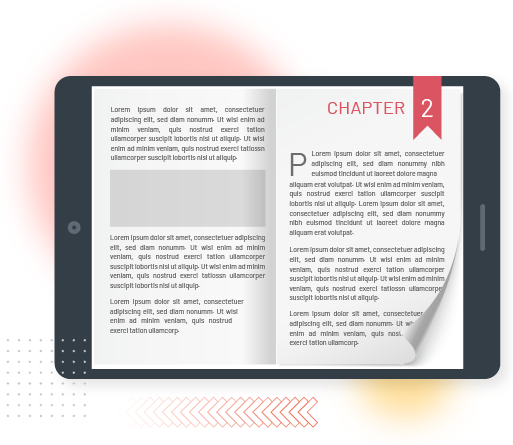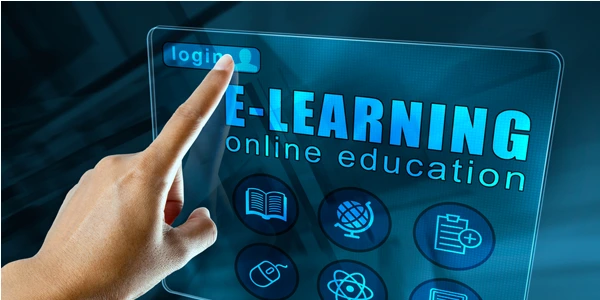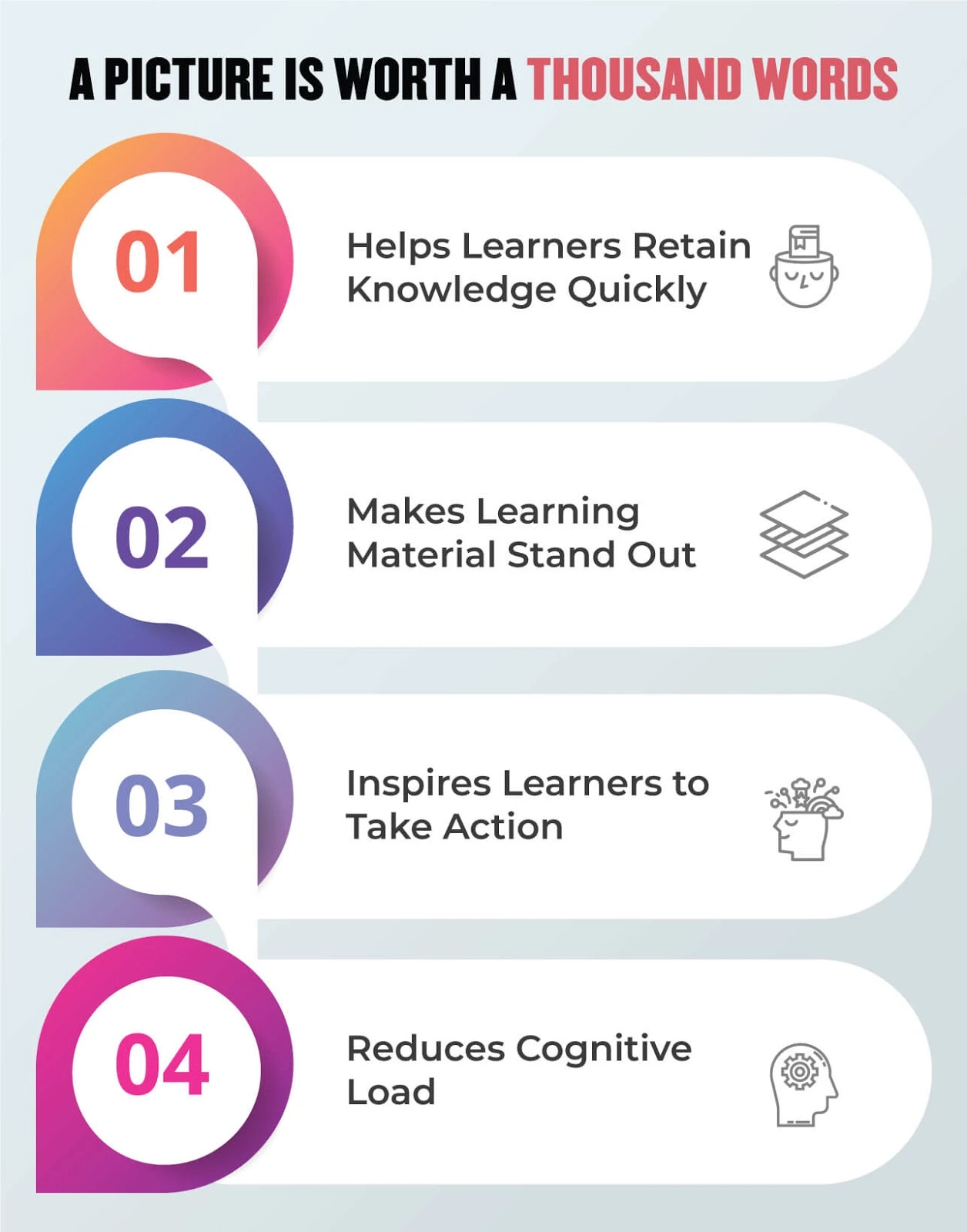

Sarah’s challenge is faced by countless professionals in today’s digital age. As organizations and institutions embrace online learning, the demand for effective eLearning content development has skyrocketed. The corporate eLearning market is expected to reach $44.6 billion by 2028. Moreover, interactive eLearning modules are preferred by 82% of enterprise employees because they hold their attention better than non-interactive videos.
Whether you're a seasoned instructional designer or new to the world of online education, understanding the best practices for creating impactful eLearning content is crucial.
Interactive eLearning modules are the cornerstone of effective online education. These modules can include quizzes, simulations, drag-and-drop exercises, and clickable infographics, all designed to make the learning experience more dynamic and memorable.
Consider a language learning course that uses interactive dialogues where learners choose responses to progress through a conversation. Or imagine a safety training module that employs a virtual reality simulation, allowing employees to practice emergency procedures in a risk-free environment. These examples demonstrate how interactivity can transform passive content into an engaging learning experience.
Interactive eLearning modules offer numerous benefits. They cater to different learning styles, provide immediate feedback, and allow learners to practice skills in a controlled environment. Moreover, interactivity helps maintain focus and motivation, especially for complex or lengthy topics that might otherwise become tedious in a traditional format.
When creating interactive eLearning modules, it’s essential to align the interactions with learning objectives. Avoid adding interactivity for its own sake; instead, ensure each interactive element serves a purpose in the learning process. For example, a clickable diagram of a machine could help technicians understand its components better than a static image. Numerous authoring tools are available for developing interactive eLearning modules. Popular options include Articulate Storyline, Adobe Captivate, and H5P.

Never ignore the power of visual components in eLearning. Incorporating high-quality images, infographics, videos, and animations can significantly enhance the learning experience and improve information retention.
Various types of visual content can be used in eLearning. These include static images, such as photographs and illustrations; dynamic visuals, like animations and videos; and interactive visuals, like clickable diagrams and 360-degree images. Each type has its strengths and can convey different types of information.
Infographics are particularly powerful tools in eLearning content development. They can condense complex information into easily digestible visual formats. For example, an infographic illustrating the steps of a business process can help learners grasp the workflow more quickly than a text-based explanation alone. When creating infographics, focus on clarity, simplicity, and relevance to the learning objectives.
Video content is another valuable asset in eLearning. Short, focused videos can explain concepts, demonstrate procedures, or provide real-world examples. For instance, a customer service training course might include video scenarios of different customer interactions, allowing learners to observe and analyze various approaches to handling customer inquiries.
While visual content is essential, it’s important to strike a balance with text. Use visuals to complement and reinforce written content, not replace it entirely. For example, a step-by-step guide could combine concise text instructions with illustrative images or animations for each step, catering to both visual and textual learners.
Book a call with us now to brainstorm ideas for your eLearning content.
Artificial Intelligence (AI) is revolutionizing eLearning content development. From personalized learning paths to intelligent content creation, AI helps content developers create more adaptive, responsive, and tailored learning experiences. AI algorithms can analyze a learner’s performance, preferences, and behavior to create customized learning paths.
AI can also assist in the content creation process itself. Natural Language Processing (NLP) algorithms can help generate quizzes, summaries, and even explanatory text. For instance, an AI tool could analyze a complex scientific article and generate a simplified summary suitable for a beginner-level course, saving time for content developers.
AI-driven intelligent tutoring systems can provide learners with immediate, personalized feedback and support. These systems can identify areas where a learner is struggling and offer targeted explanations or additional practice. For example, a coding course might use an AI tutor to analyze a student’s code, identify errors, and provide specific guidance on how to correct them.
While AI offers many benefits, it’s important to consider ethical implications and potential biases in AI algorithms. Content developers should ensure that AI-powered tools are used responsibly and in ways that enhance, rather than replace, human instruction and interaction.
Microlearning has gained popularity in eLearning content development due to its effectiveness in today’s attention-challenged world. This approach involves breaking down complex topics into bite-sized, easily digestible chunks of information. Each microlearning unit typically focuses on a single learning objective and can be completed in a short amount of time.
Microlearning offers several advantages. It caters to shorter attention spans, allows for flexible learning schedules, and promotes better retention of information. For example, a complex software training course could be broken down into a series of 5-minute video tutorials, each focusing on a specific feature or task.
Creating microlearning content should focus on conciseness and clarity. Each unit should have a clear learning objective and deliver information in a straightforward manner. Use a mix of formats such as short videos, infographics, or interactive quizzes to keep learners engaged and cater to different learning preferences.
Mobile optimization is crucial for eLearning content development with the increasing use of smartphones and tablets. Mobile-friendly content allows learners to access materials anytime, anywhere, making learning more convenient and accessible. Ensure your eLearning content is responsive and displays correctly on various screen sizes.
Consider creating mobile apps for your eLearning courses, or using responsive design techniques to ensure content adapts to different devices. For instance, a language learning course could offer short, daily vocabulary lessons through a mobile app, allowing learners to practice during their commute or in spare moments throughout the day.

Corporate eLearning strategies should be closely aligned with overall business objectives. Before developing content, clearly define the learning outcomes and how they contribute to organizational goals. For example, a customer service training program should directly address the company’s customer satisfaction targets and service standards.
Start your corporate eLearning content development process with a thorough needs assessment. This involves identifying skill gaps, understanding learner preferences, and determining the most effective delivery methods. Use surveys, interviews, and performance data to gather this information and inform your content development strategy.
Corporate eLearning content should be directly applicable to employees’ job roles. Use real-world scenarios, case studies, and examples from within the organization to make the content more relevant and engaging. For instance, a sales training course could include simulations of actual customer interactions based on the company’s products and target market.
Social learning is a powerful component of corporate eLearning strategies. Implement features like discussion forums, collaborative projects, and peer-to-peer feedback mechanisms. Regularly review and update your content based on these insights to ensure ongoing relevance and effectiveness.
Lexiconn, the best content writing agency in Mumbai, can be a valuable partner in your eLearning content development by providing tailored solutions that cater to both educational institutions and corporate sectors. They specialize in creating high-quality, engaging content, whether you need interactive modules, videos, or custom animations. With their expertise in designing interactive eLearning modules, Lexiconn can enhance learner engagement through quizzes, scenarios, and real-world simulations that help reinforce concepts effectively.
Lexiconn understands the importance of aligning eLearning solutions with corporate eLearning strategies, ensuring that the content not only educates but also supports organizational goals, such as improving employee performance or customer service. Whether it’s compliance training or skill development, Lexiconn’s customized approach ensures that every piece of content is purposeful, engaging, and valuable.
Visit us at www.lexiconn.in or drop us a line at [email protected].
Effective eLearning content development requires a multifaceted approach that combines interactivity, visual appeal, technological innovation, and strategic planning. By implementing interactive eLearning modules, prioritizing visual content, leveraging AI, focusing on microlearning and mobile optimization, and developing effective corporate eLearning strategies, you can create engaging and impactful online learning experiences.
Book a 30-minute session with us today to see how we can assist you in eLearning content development.


I have read and accept the Privacy Policy
Read More